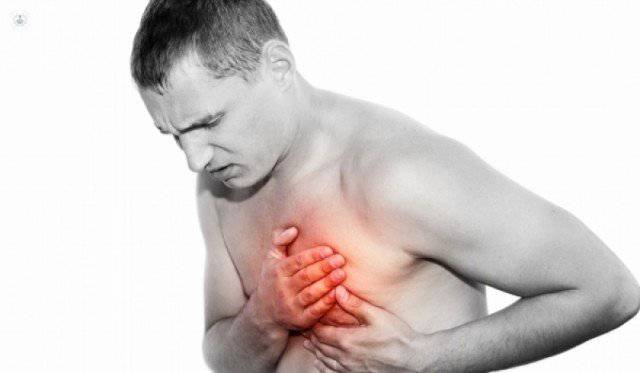
Heart attacks: what they are and how to avoid them
Chest pain is the most frequent symptom that precedes a heart attack (myocardial infarction). However, there are people who do not have definite discomfort, and that complicates the diagnosis. In addition to identifying symptoms, controlling risk factors is critical to preventing an attack.

What is a heart attack?
The most frequent cause of a heart attack is because the blood flow no longer reaches part of the heart because a coronary artery is blocked. Coronary arteries are those on the surface of the heart and that supply the heart muscle. This obstruction in the coronary arteries is usually due to the rupture of a plaque of fat (build-up of cholesterol) inside the artery. The rupture causes a blood clot to form, which completely disrupts the flow of blood.
What are the symptoms of a heart attack?
There are many typical symptoms of a heart attack, the most important of which is prolonged chest pain (in the centre of the thorax). The pain not only does not subside but can spread to the left arm, towards the jaw, and to the upper part of the abdomen. In many cases, it is also accompanied by symptoms associated with the parasympathetic nervous system (profuse sweating, dizziness and slow pulse). It should be noted that these symptoms are typical in some people, but many other people have a heart attack without experiencing chest pain. They may have pain in other areas or without accompanying pain. This is what makes it difficult to diagnose. To rule out heart attack with the symptoms alone is risky. Diagnosis should be made using tests such as an electrocardiogram and a blood test, alongside the symptoms.
After a heart attack, are there limitations to leading a normal life?
The term heart attack is very generic in the sense that it includes patients who have had severe attacks and other patients who have had minor attacks. Severe heart attacks can have repercussions in patients’ daily lives with them noticing greater weakness and have difficulty breathing when they exercise. In many cases, small or medium-sized attacks have no effect at all on the daily routine of patients. In all cases however, it is very important to try to avoid or minimise these limitations and complications. Medication is prescribed at the time of the attack and should not be taken only during admission, but as a long-term medication.
What measures are necessary to avoid a second heart attack?
Preventative measures after suffering a heart attack are the same as those to avoid it. Fundamentally, it is the control of cardiovascular risk factors. The most important are hypertension, diabetes, high cholesterol and smoking. For this reason, patients' lifestyle, food and physical exercise are crucial. To help control the risk factors, medication is necessary, the patient will need antihypertensive drugs in the case of high blood pressure, to follow a healthy, balanced diet, take insulin in the case of diabetes, statins for the proper control of cholesterol, and of course, the patient must quit smoking completely. All this will not only help after the first heart attack, but also, minimise the chances of it happening again.

